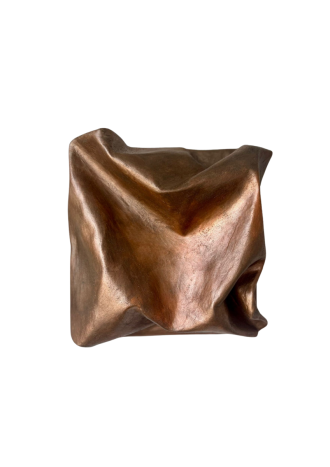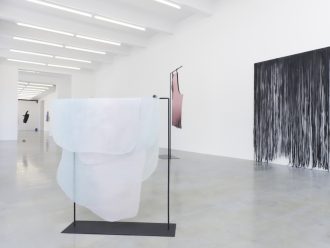Sometimes the obscene truth can be much more useful than a polite lie. We try to do our best by pretending that something doesn’t bother us. A loud neighbour is just searching for his ultimate favourite music genre, a lousy politician just doesn’t have enough support from his party, a careless driver was just trying not to be late for work … A swearword becomes a spell that keeps us in a civilised lane. We say ‘Thank you’, but perhaps think ‘F**k you.’ Soon it becomes a habit, a sort of ritual to let off steam. If not expressed, anger builds up to unbelievable heights, controls our every move, and makes choices for us. There’s no rhyme or reason to the unspoken frustrations and the damage it can cause. So there’s no surprise that the Lithuanian artist Neringa Poškutė-Jukumienė loudly proclaims ‘WTF?!’ in her latest exhibition, which opened on 1 July in the Meno Parkas gallery (Kaunas, Lithuania).
In her previous solo exhibition ‘In Gold We Trust’ (2019, Klaipėda Culture Communication Centre Exhibition Hall), Neringa tried to show not an expression of the material value of jewellery, but other modern qualities of this niche field in the fine arts. She sought to extend the understanding of jewellery, and the importance of its perception. She also aimed to provoke the viewer by combining noble and other less expensive materials, while keeping the basis of aesthetic, philosophical and sensitive social meaning, which played a valuable role and inspired the viewer to deeper reflection. The exhibition marked a new artistic era for Neringa, and the latest art show in Kaunas only consolidates this fact. The conscious move away from the traditional understanding of the scale of jewellery and the introduction of installations and complementary video works in the artist’s body of work are very intriguing. Jewellery as a social critique, jewellery as resistance to stagnant societal stereotypes, jewellery in which it is difficult to recognise jewellery, because the artist invites us to expand the boundaries of the perception of jewellery, as if to illustrate the saying ‘Even a tank can be an object of jewellery.’ One can’t always resist this artistic combat.
Just as some road signs can be baffling to inexperienced drivers, contemporary art installations can sometimes perplex gallery visitors, who lack positive experience with the latest examples of modern art. For many, works of contemporary art often provoke doubt or even confusion, the installations being indeed somewhat obscene to the classic gaze, followed by a cheeky smile, which might be a judgement of either the ideas conveyed or the objects themselves. But Neringa Poškutė-Jukumienė does not allow ignorance to take over in her artistic territory: instead, she permits the public not to take anything too seriously, by introducing a game as a way of interacting with her installation Bang. People can throw little white magnetic rhombuses, like darts, targeting the metal plates that hang from the ceiling, thus creating a violent banging sound. Or they can peacefully form their own geometric compositions making barely a sound. The choice is always yours.
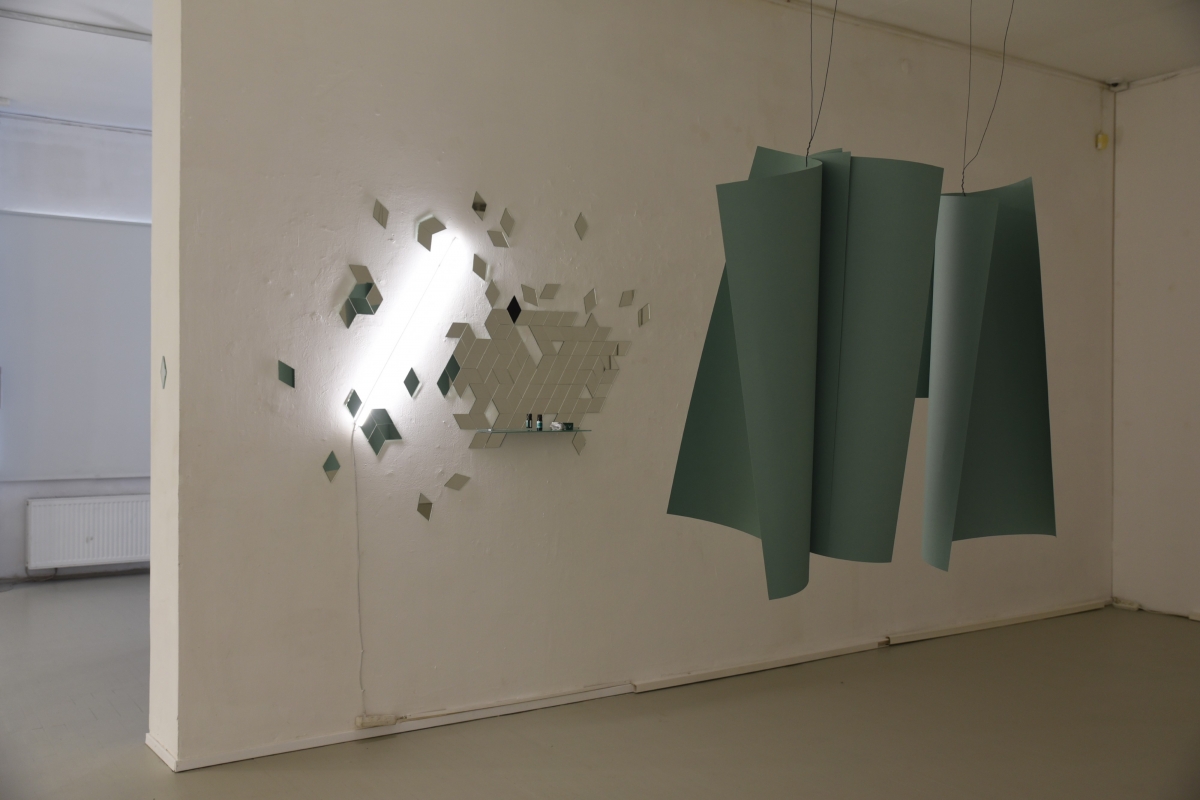
Exhibition ‘WTF’ by Neringa Poškutė-Jukumienė at the Meno Parkas gallery, 2021. Photo: Ingrida Mockutė-Pocienė
Neringa admits that the idea for this installation came from the white diamond-shaped road sign that, in the Lithuanian context, is only known so far in Kaunas. This sign, painted on the road, means you are approaching a pedestrian crossing. Thirty metres: that is exactly the distance needed for a driver to react and to be able to stop the car, of course, if he is not exceeding the speed limit. Pedestrians should also pay attention to the fact that if a driver has passed the ‘diamond’ without slowing down he will probably not be able to stop in time. Of course, we could ironise, remembering stereotypes about Kaunas residents who emphasise the brand of their car as a mark of social distinction between positions and cliques. Vehicles and how fast they are have become almost equivalent to jewellery, which in olden times used to determine and signal social structures. This represents significant social driving forces that can often lead to road rage incidents and innocent lives lost for no good reason. Speed addiction can deactivate empathy. But in the case of the installation Bang, the ‘pedal to the metal’ approach leads to a positive release of surplus emotions. Anger can be useful, then you can control it.
In a sense, Neringa lampoons the overrated and grandiose diamond, which for centuries has been a sign of power, wealth and status, by creating many objects in its shape, and inviting visitors to the exhibition to touch it freely. Indeed, there is an immense amount of diamonds in the world, unlike gold, of which reserves are limited and will run out some time in the future. Diamonds, however, are one of the most common precious stones. It is said that companies like De Beers release only enough diamonds to meet annual demand. This gives the illusion that diamonds are exceedingly rare. In turn, the seemingly limited supply inflates the price of diamonds.

Exhibition ‘WTF’ by Neringa Poškutė-Jukumienė at the Meno Parkas gallery, 2021. Photo: Ingrida Mockutė-Pocienė
Diamond-shaped mirrors in an art object called Brilliant Green catch you in the act of existing. It demands your full attention and ability to be present here and now, because, after all, it’s you looking at your own, although somewhat distorted, image. The selfie-friendly aspect of Neringa’s exhibition should not be overlooked. We often judge people today because of their vanity and passion for recording their every living moment and tedious amount of unnecessary mirror selfies, but we frequently forget how expensive mirrors used to be in the past, and as costly as gemstones. Some 18th-century researchers note that the estimated value of mirrors can be measured by their high valuation in household inventories, and their repeated mention in wills as a family’s most cherished possession. Now, mirrors are a dime a dozen, but a mirror not only brings utility and beauty to interiors; for Neringa, it also provides an artistic medium. In her installation Regalia. Invitation: Be Mayor, she invites visitors to try on the regalia of the Klaipėda city mayor, as if metaphorically stripping the local kingpin of his signs of power. The video work attached to this piece showcases the politician’s talent for speaking a lot but saying nothing. The folk tale ‘The Emperor’s New Clothes’ comes to mind …
Another installation which also takes a critical approach to municipal policies is called Shallow. The entire cultural strategy of Klaipėda city municipality for 2017 to 2030 is written on sheets of iron. A mirror image of the plan of measures for implementing the strategy is covered in diamond-shaped magnets, which perform the function of bookmarks. Every detail is important in the promotion of culture, so most of the area is already covered. This hides the backlog, missed opportunities and wasted funds during the four years the strategy has been applied. It also accentuates the bureaucratic attitude that culture is treated like an object of consumption, whose demand and supply indicators can be inflated, and consumption trends and growth predicted 13 years ahead. Fictitious strategies remain as empty promises that bury the future of the local culture in a shallow grave.
The video installation Let’s go for a walk?! starts with Neringa stepping off the ferry that has just sailed from the Curonian Spit. It’s early in the morning, so the few people around her are a couple of surprised fishermen. Who can blame them, because Neringa is wearing an unusual accessory, a backpack like a wooden chair. She walks casually around the streets of Klaipėda’s old town, sometimes sitting down to rest, but never uttering a word. In a sense, this video applies to all of us: armchair critics, couch potatoes, and back-seat drivers. We prioritise convenience and comfort over progress and change. We do not object to terrible architectural decisions that cost taxpayers’ money. We quietly tolerate an unaesthetic flower boat in one of the city’s central squares. We look at the rhombus-shaped mirror in the artist’s hand, but refuse to see ourselves.
Boundary markers are everywhere, in our bodies, our cities, and even our minds. Art helps to expand our thinking. More and more researchers agree that art enhances the functioning of the brain, and even claim that it has an impact on the brain’s wave patterns and emotions, the nervous system, and can actually raise serotonin levels. And on further reflection, art can even help answer the rhetorical question ‘WTF?’.

Exhibition ‘WTF’ by Neringa Poškutė-Jukumienė at the Meno Parkas gallery, 2021. Photo: Ingrida Mockutė-Pocienė
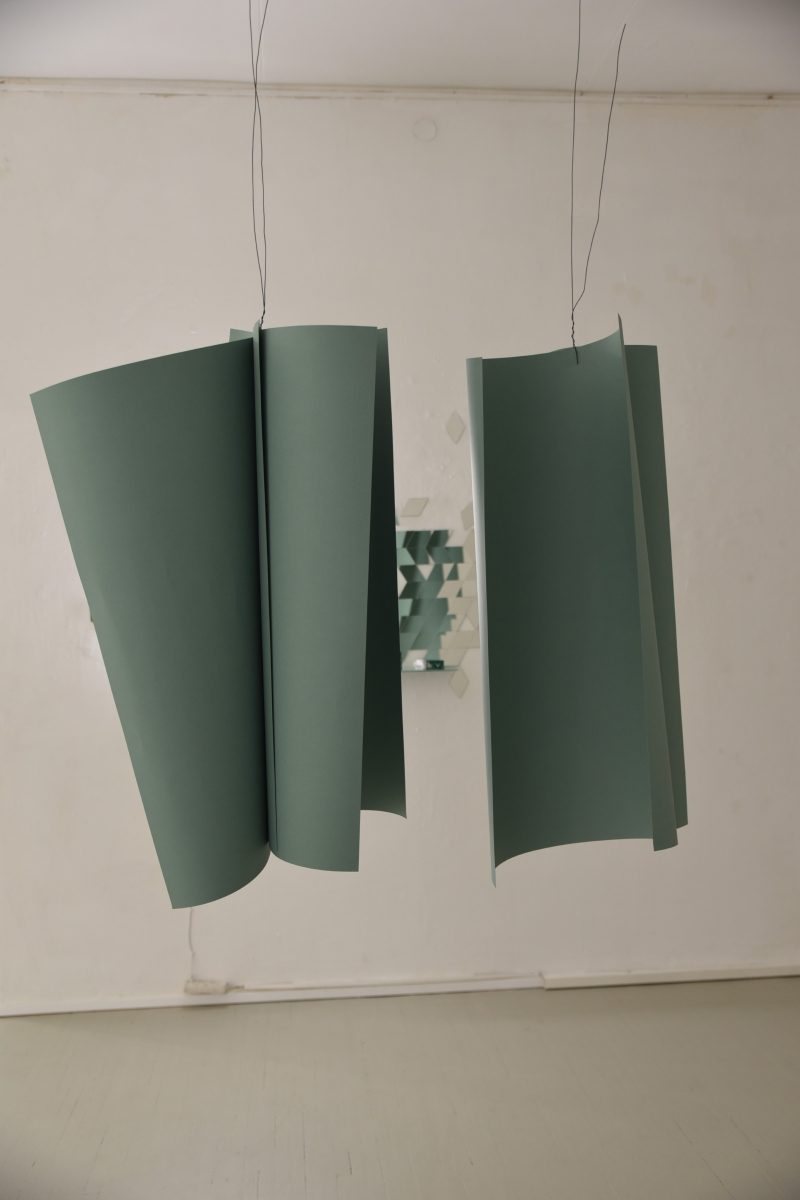
Exhibition ‘WTF’ by Neringa Poškutė-Jukumienė at the Meno Parkas gallery, 2021. Photo: Ingrida Mockutė-Pocienė

Exhibition ‘WTF’ by Neringa Poškutė-Jukumienė at the Meno Parkas gallery, 2021. Photo: Ingrida Mockutė-Pocienė
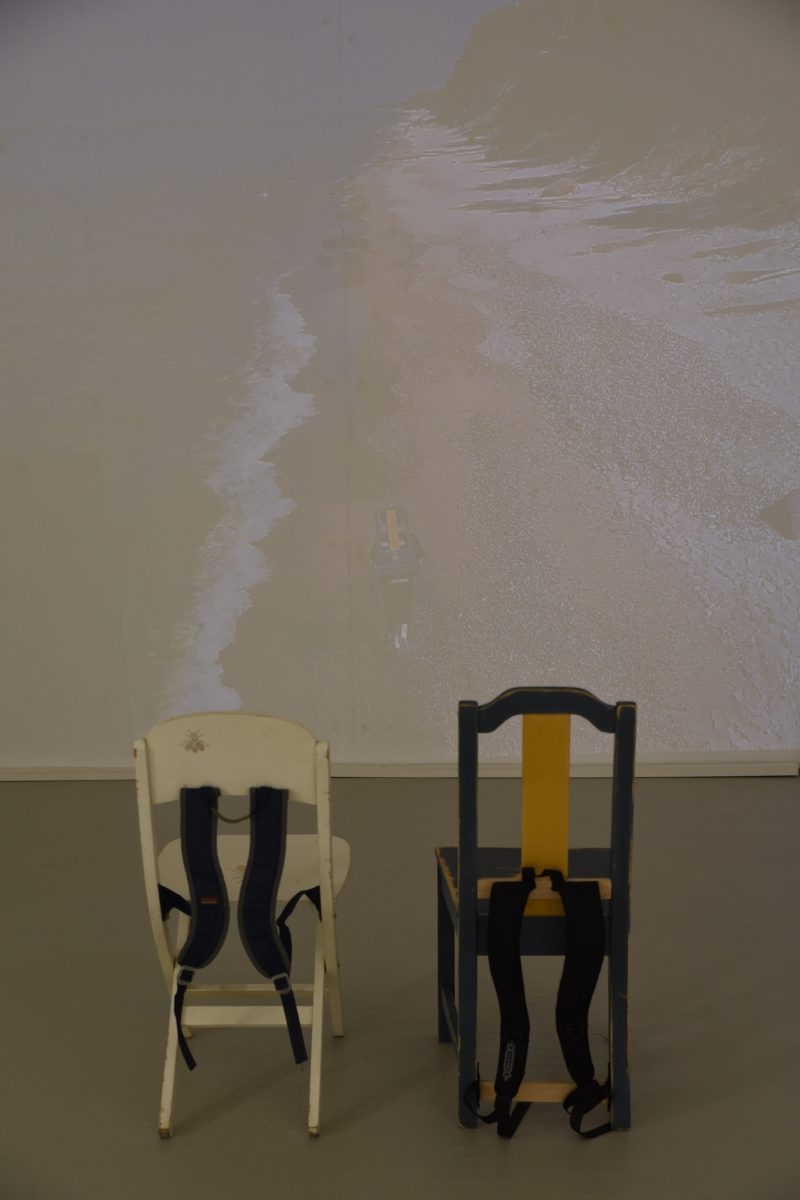
Exhibition ‘WTF’ by Neringa Poškutė-Jukumienė at the Meno Parkas gallery, 2021. Photo: Ingrida Mockutė-Pocienė










